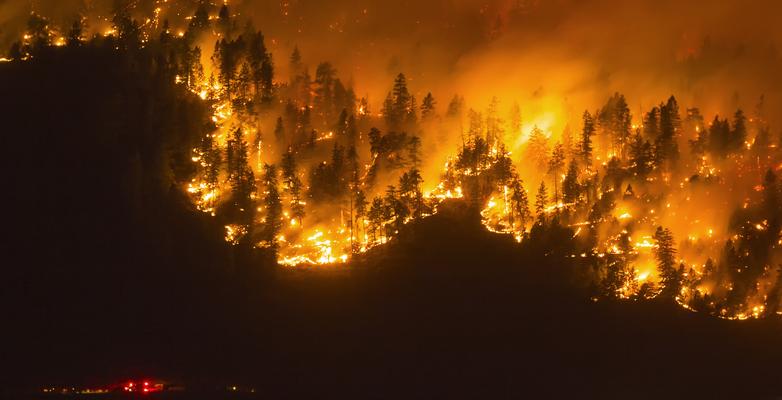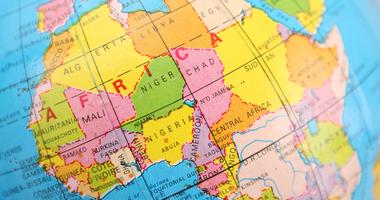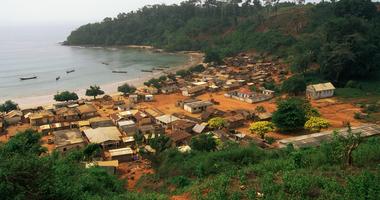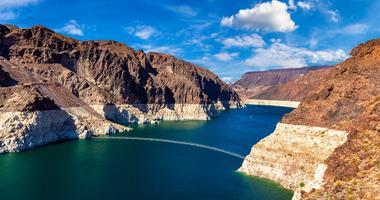
Wildfires and the Climate Crisis
The combination of multiple climate crisis-driven factors is creating a perfect storm for wildfires.
This summer, the wildfires ravaging parts of Canada have been a major news story – not just because of their record-breaking size and scope, but because smoke and soot from them has blanketed parts of the eastern and midwestern United States. At different points this season, cities like New York and Chicago have had the worst air quality in the world, owing largely to the fires’ impact hundreds of miles from the flames themselves.
The Canadian wildfires have been burning for months. It all started this spring, when parts of eastern Canada recorded their driest April on record. Droughts like this dry out the land, killing plant life – which then also dries out itself, becoming far easier to ignite. And with less predictable rains, it’s harder to stop these fires once they begin.
The Canadian wildfires of 2023 have been some of the worst in the country's history. They’ve already burned more than 8.8 million hectares of land across Canada. And the fires are unlikely to stop any time soon. According the Associated Press, “warm weather and dry conditions across Canada indicate the potential for higher-than-normal fire activity through July and August.”
Which of course also means that the US should brace itself for more smoke and soot drifting over parts of the country as weather patterns shift.
But it’s not just Canada. All around the world the climate crisis is making wildfires more extreme in terms of their size, frequency, and severity. And this is having a devastating impact on forests, communities, and economies. Here’s why.
1. Warmer temperatures
The climate crisis is causing global temperatures to rise, which is leading to warmer and drier conditions in many parts of the world. This dry, hot weather creates the perfect conditions for wildfires to start and spread.
2. More frequent and severe droughts
Climate change is also causing more frequent and severe droughts. This is because less rain is falling in some parts of the world while at the same time warmer temperatures are causing glaciers and snowpack to melt earlier in the year, which reduces the amount of water available for plants and trees in summer when they need it most. When plants and trees are stressed by drought, they are more likely to die or become weakened, which makes them more susceptible to fire.
![image of forest fire; “The combination of four key factors is creating a perfect storm for wildfires: 1. Warmer temperatures, 2. More frequent and severe droughts, 3. More dead and dying trees, 4. More lightening strikes.”]](/sites/default/files/styles/40_percent_wide/public/2023-07/Wildfire%20Factors.png?itok=QeSaExwX)
3. More dead and dying trees
Warm and dry conditions, particularly in months that were once cooler, allow some very destructive insects, like the mountain pine beetle, to survive winters and reproduce quickly. The beetles and other pests kill trees and brush, which then dry out. When trees die, they add to the fuel load for wildfires.
4. More lightning strikes
Climate change is also likely causing more lightning strikes in parts of the world. This is because warmer temperatures are increasing the amount of moisture in the atmosphere, which can lead to more thunderstorms. Lightning is a major cause of wildfires, and the increase in lightning strikes may be contributing to the increase in the number of wildfires.
The combination of these factors is creating a perfect storm for wildfires.
In addition to what is listed above, the climate crisis is also making it more difficult to fight wildfires. Hotter temperatures and drier conditions make it harder for firefighters to work safely and effectively. And the increase in the number and size of wildfires is putting a strain on firefighting resources.
The impacts of climate change on wildfires are already being felt around the world, and they are only going to get worse in the future – unless we act now to stop them. We need to take action now to reduce greenhouse gas emissions and mitigate the effects of climate change. If we don't, wildfires will continue to become more and more extreme, and the cost of fighting them will continue to rise.
Ready to Take Action
We know that to turn this all around it is going to take all of us. We need to end our reliance on fossil fuels and transition justly to a clean energy economy if we ever hope to end the climate catastrophes we are seeing more and more of today.
Ready to get started?
Sign up today to start receiving emails from Climate Reality featuring the latest news and actions you can take to fight the climate crisis.




